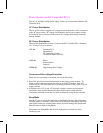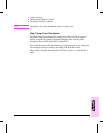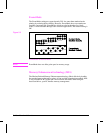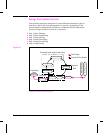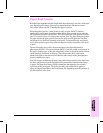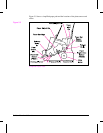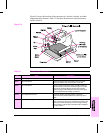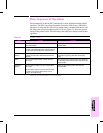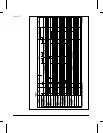
Toner Cartridge
As the “heart” of the Image Formation System, the toner cartridge houses the
cleaning, conditioning, and developing steps of the process. The toner cartridge
contains the photosensitive drum, primary charging roller, developing station, toner
cavity, and cleaning station. Including these components, which wear, degrade, or
are consumed in the replaceable toner cartridge, eliminates the need for a service
call when replacement is required. The special photosensitive properties of the drum
allow an image to be formed on the drum surface and then transferred to paper.
CAUTION
The printer’s toner cartridge does not include a light-blocking shutter. Be careful to
avoid exposing the drum to light, which can permanently damage the drum. Protect
the cartridge whenever removing it from the printer.
Step 1: Drum Cleaning
The cleaning blade is in contact with the surface of the drum at all times. As the
drum rotates during printing, excess toner wiped off and stored in the waste toner
receptacle.
Step 2: Drum Conditioning
After the drum is physically cleaned, it must be conditioned. This process consists
of applying a uniform negative charge on the surface of the drum with the primary
charging roller, located in the toner cartridge. The primary charging roller is coated
with conductive rubber. An AC bias is applied to the roller to erase any residual
charges from any previous image. In addition, a negative dc bias is applied by the
charging roller to create a uniform negative potential on the drum surface. The
amount of dc voltage is modified by the print density setting.
Step 3: Image Writing
During the writing process, a modulated laser diode projects the beam onto a
rotating scanning mirror. As the mirror rotates, the beam reflects off the mirror, first
through a set of focusing lenses, off a mirror, and finally through a slot in the top of
the toner cartridge, and onto the photosensitive drum. The beam sweeps the drum
from left to right, discharging the negative potential wherever the beam strikes the
surface. This creates a latent electrostatic image, which later is developed into a
visible image.
Because the beam is sweeping the entire length of the drum and the drum is
rotating, the entire surface area of the drum can be covered. At the end of each
sweep, the beam strikes the beam detect lens, generating the Beam Detect Signal
(BD). The BD signal is sent to the DC Controller, where it is converted to an
electrical signal used to synchronize the output of the next scan line of data.
Functional Overview 5 - 13




